Shades of Black
Symbolic language and covert military programs
Trevor Paglen
Military culture is filled with symbols and insignia, a rich visual language that signifies everything from various unit and command affiliations to significant events and noteworthy programs. There are memorial coins, flags, and T-shirts to commemorate significant events, patches to designate one’s affiliation with different military units, and totemic mascots for different weapons systems and job descriptions.
This symbolic regime extends to the world of classified military operations, activities, locations, and endeavors—a world that defense industry and military insiders refer to as the “black world.” The black world is composed of military activities that are officially unacknowledged—programs, people, and places that (for official purposes) “do not exist.” Thus, the black world’s symbolic regime instantiates a peculiar set of variations on the visual language of less obscure military activities.
The symbols and insignia shown here provide a glimpse into how classified military units answer questions that have historically been the purview of mystery cults, secret societies, religions, and mystics: How does one represent that which, by definition, may not be represented?
• • •
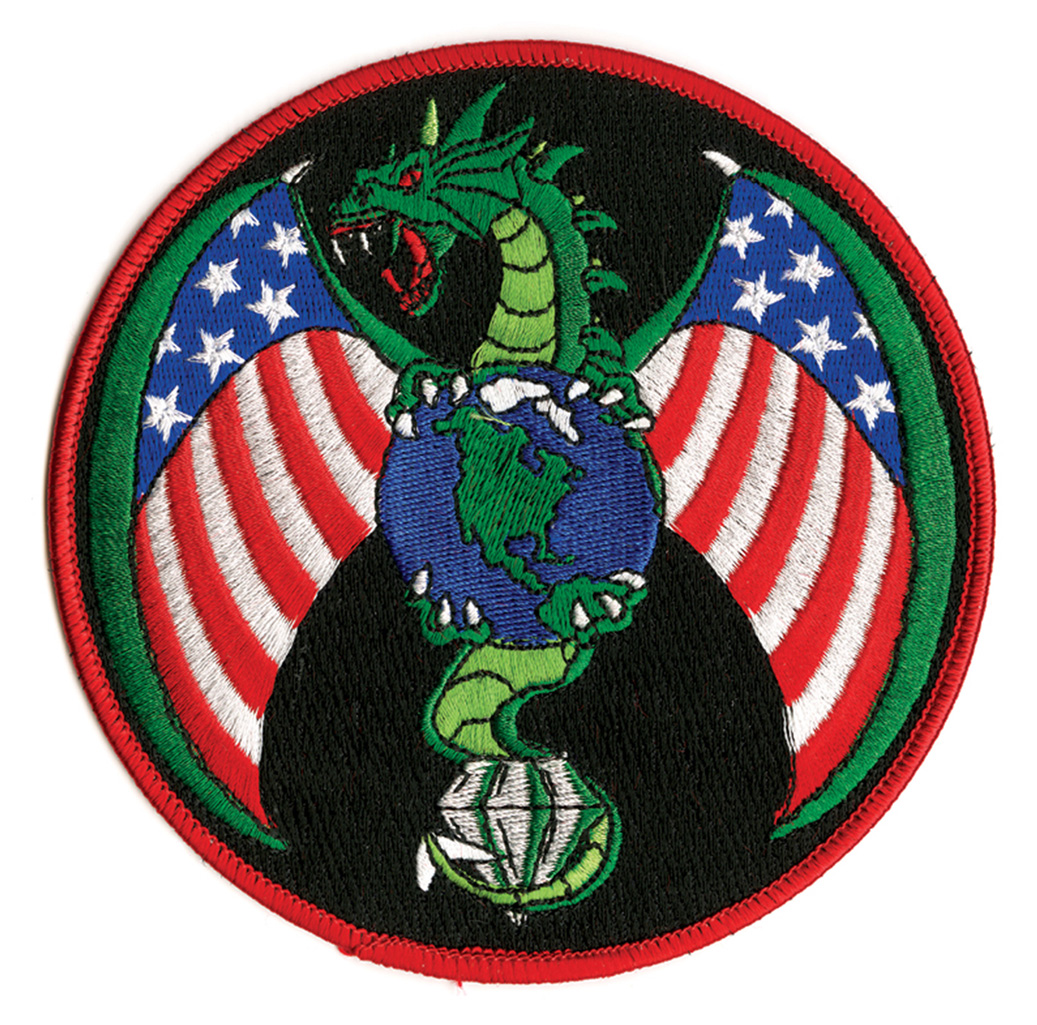
This is a program patch from the National Reconnaissance Office, the United States’ “black” space agency whose existence was a secret until the early 1990s (the agency was formed in the early 1960s).
DRAGON is an old code name within the BYEMAN information compartment for the infrared imaging capabilities on CRYSTAL (advanced KH-11) reconnaissance satellites.
• • •
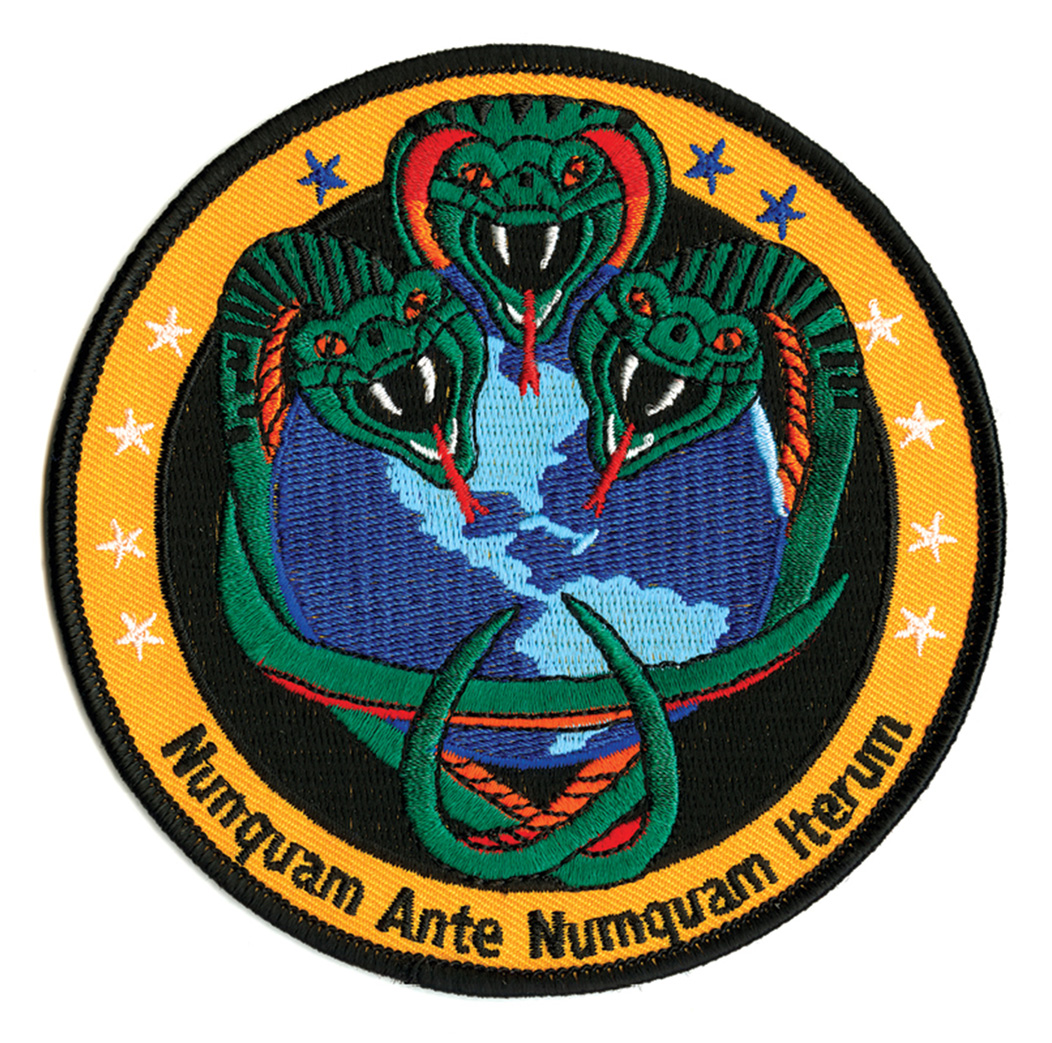
A National Reconnaissance Office program patch, whose referent remains entirely obscure. The Latin inscription translates as “Never before, never again.”
• • •
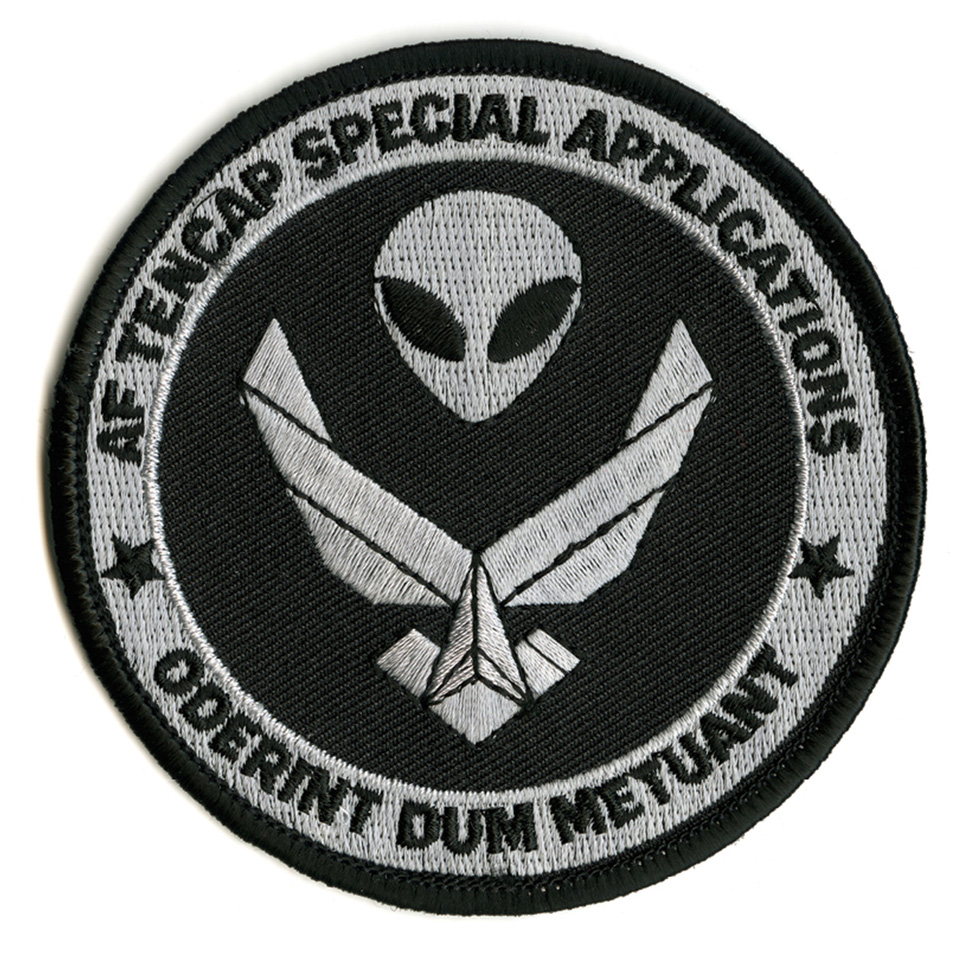
TENCAP is an acronym for Tactical Exploitation of National Capabilities, a collection of programs that involve developing tactical (battlefield) applications out of reconnaissance satellite capabilities (which are normally thought of as strategic).
“Special” almost invariably means “black” or highly classified. The phrase Oderint Dum Metuant is usually associated with Caligula, the first-century Roman emperor whose name became synonymous with depravity, madness, and tyranny. It translates as “Let them hate so long as they fear.”
• • •
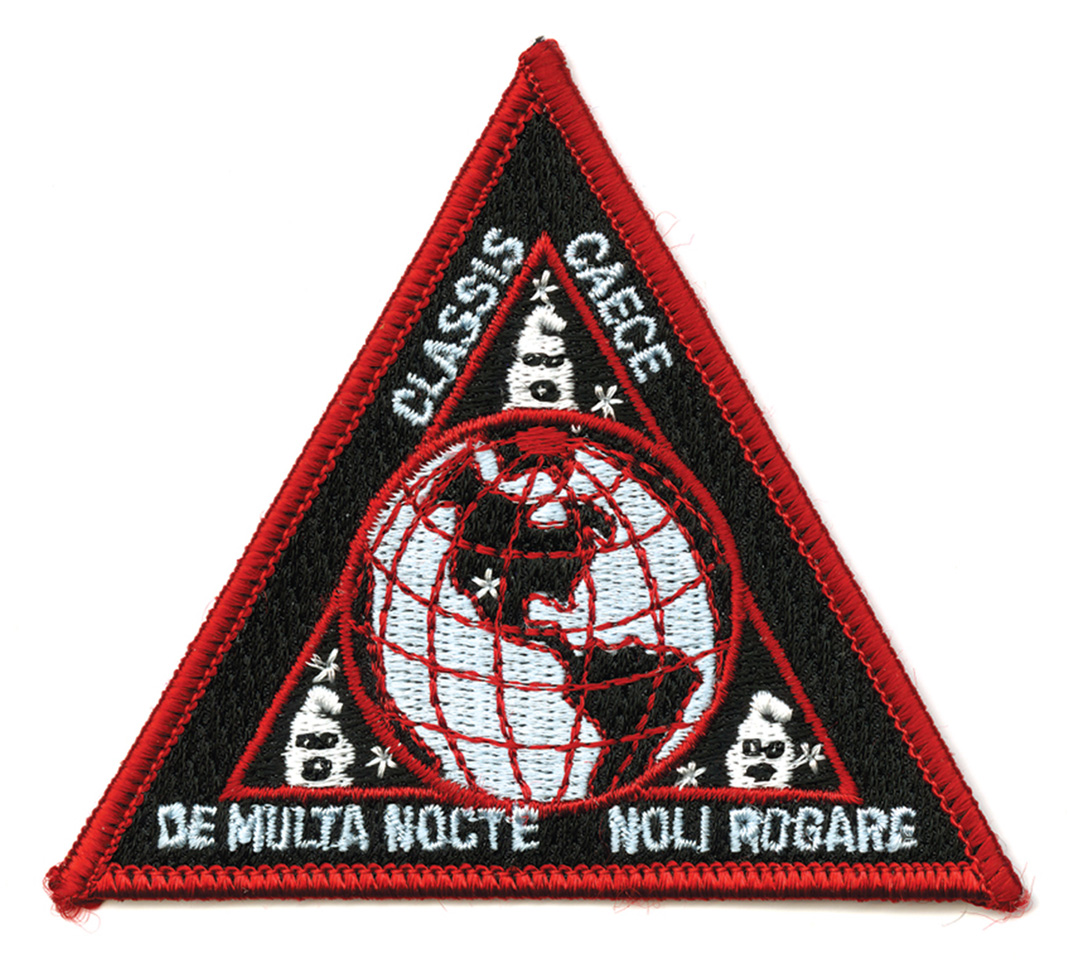
The text of this patch roughly translates as “A Secret Squadron / From Deep in the Night / Don’t Ask Any Questions.” This patch is or was probably worn by an obscure unit, operating out of a secret Air Force Base near Groom Lake, Nevada, called the “Ghost Squadron.” The single star in the southwest United States presumably designates the group’s operating location.
The Ghost Squadron may be a helicopter support and search-and-rescue team for test squadrons flying classified aircraft.
• • •
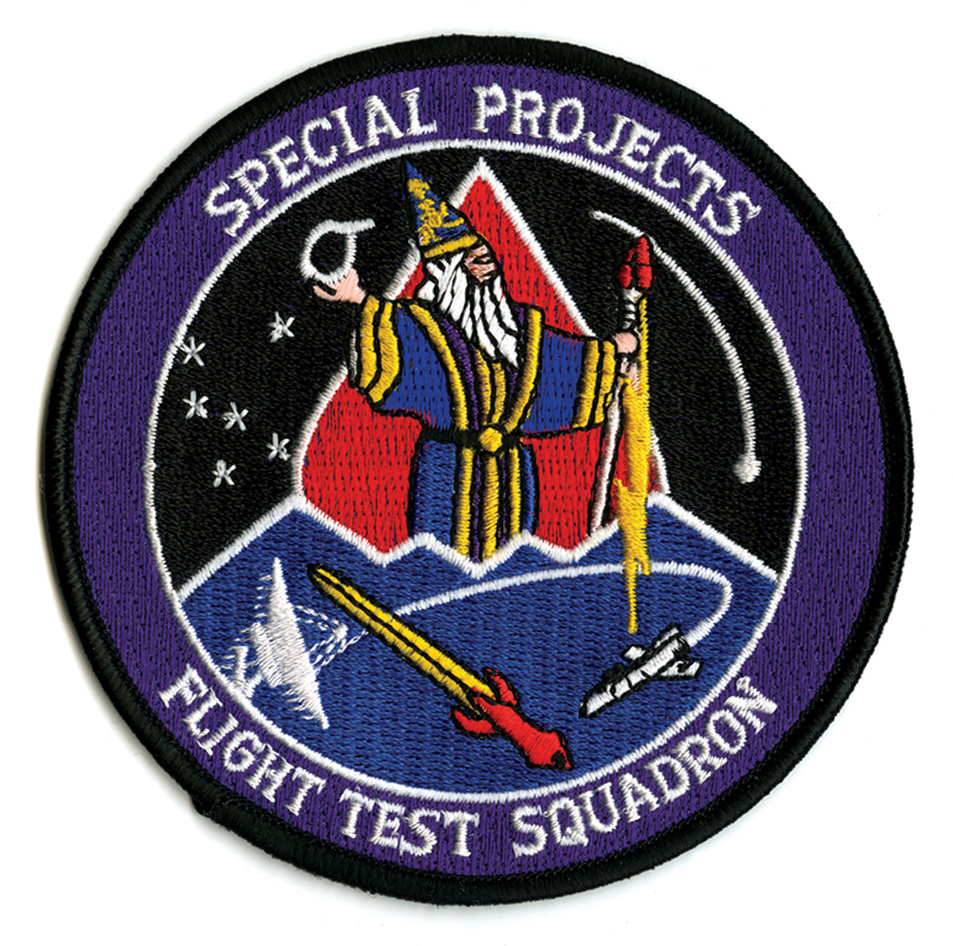
Also based at Groom Lake, the Special Projects Flight Test Squadron is the Air Force’s premier “black” squadron for testing classified prototype aircraft. The squadron’s mascot is a wizard. A collection of six stars (five plus one) on the patch is a reference to the unit’s operating location: the secret base known as Area 51. The sigma symbol in the wizard’s right hand is a reference to the ideal radar signature of a stealth aircraft: zero. On the right side of the patch, the falling globe references aluminum balls dropped from the sky to calibrate radar equipment. Lightning bolts, such as the one emanating from the wizard’s staff, often refer to electronic warfare. The aircraft in the lower right is probably a generic symbol representing flight testing. The sword at the bottom of the image refers to a recently declassified Boeing stealth demonstrator known as the “Bird of Prey”: the handle on the sword approximates the shape of this prototype.
• • •
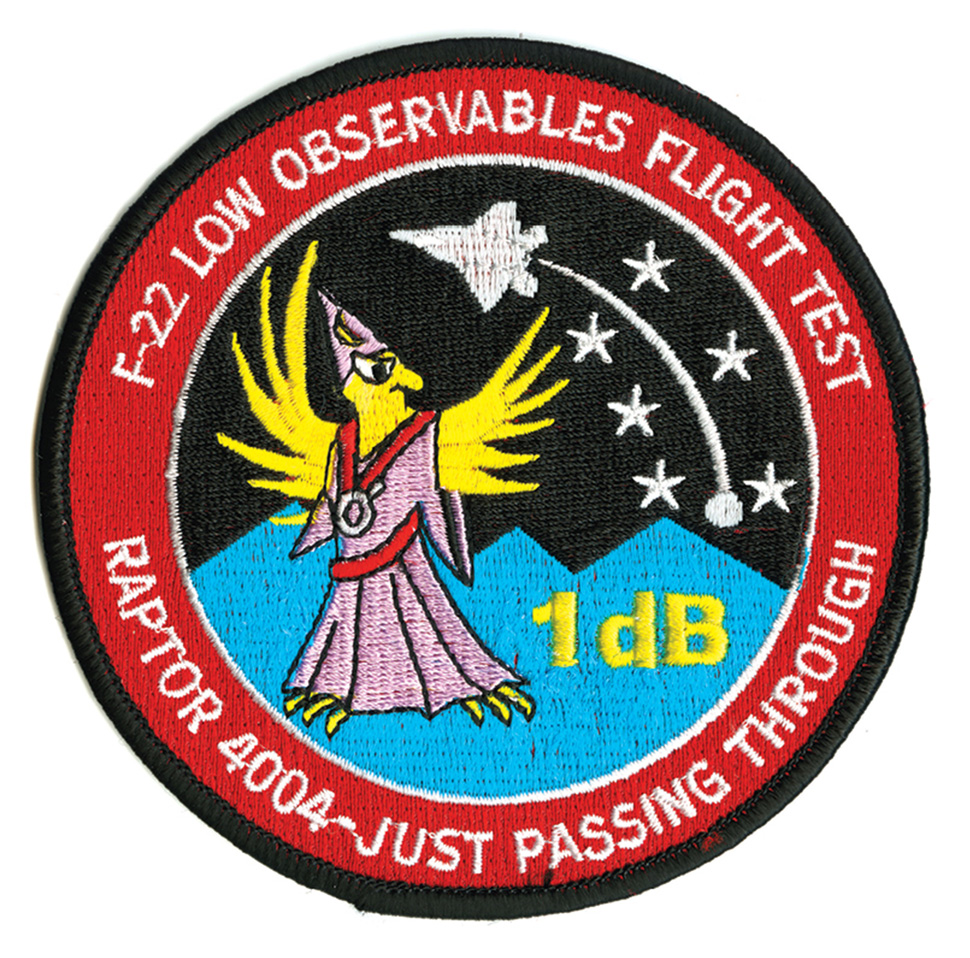
This commemorative patch for a classified flight test of an F-22 Raptor aircraft at Groom Lake shares many symbols with the Special Projects Flight Test Squadron. The mascot here is a Raptor clothed in the garments of a wizard, with a sigma symbol hanging from the figure’s neck. The collection of six stars is again a reference to Area 51. The phrase “1dB” may reference either the intended or actual radar cross-section measurement of the aircraft.
• • •
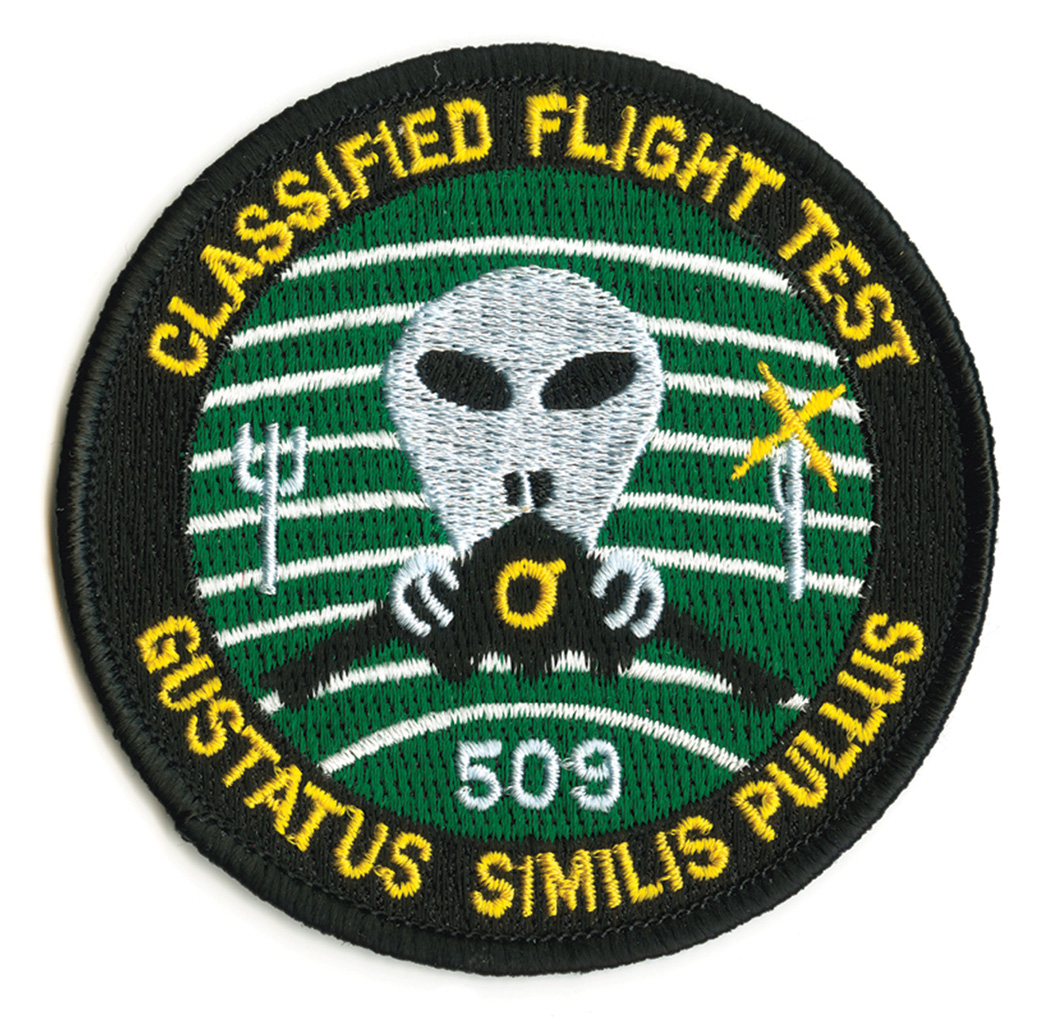
This was the original version of a patch commemorating a test flight of a B-2 “Spirit” stealth bomber. The sigma symbol on the test shape’s outline signifies invisibility. The number “509” refers to the 509th Bomb Wing, which operates the United States’ stealth bombers from Whiteman Air Force Base in Missouri. The alien is probably a reference to the 509th’s lineage. In 1947, the 509th was based at Roswell, New Mexico, home of the infamous “Roswell incident,” which ensued after the 509th’s commander, Col. William Blanchard, issued a press release whose headline stated: “Roswell Army Airfield Captures Flying Saucer on Ranch in Roswell Region.” The dog-Latin phrase Gustatus Similis Pullus translates as “Tastes like chicken.” The shapes on either side of the alien head seem to signify a fork and knife, which would be consistent with the patch’s theme of eating.
This patch was eventually modified when Air Force officials insisted that the phrase “Classified Flight Test” could not appear on the design. In an updated version of this patch, that phrase has been replaced with the words “To Serve Man.”
• • •
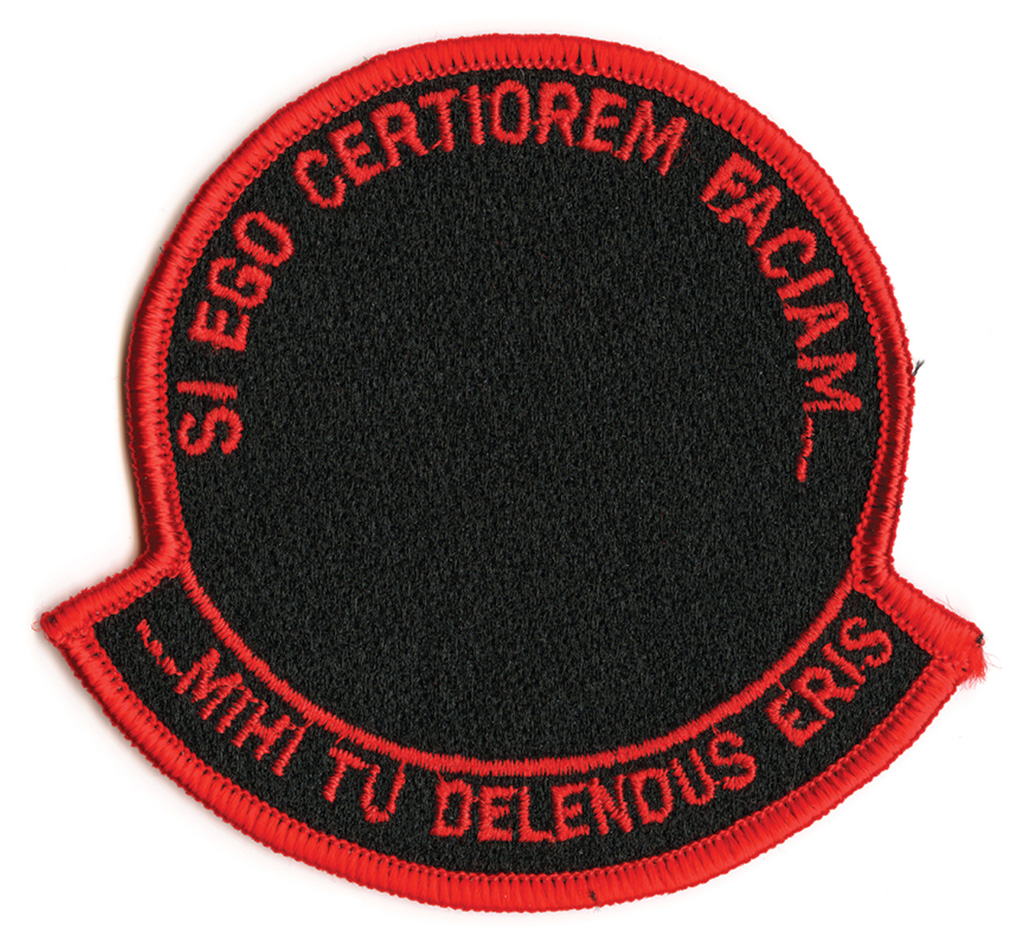
This patch signifies a “black” project conducted by the Navy’s VX-9 Air Test and Evaluation Unit, based at Point Mugu, California. VX-9’s mission is to test strike aircraft, conventional weapons, electronic warfare equipment, and to develop tactics involving said weapons systems. The Latin phrase Si Ego Certiorem Faciam … Mihi Tu Delendus Eris roughly translates into a cliché commonly heard in the vicinity of “black” programs: “I could tell you, but then I’d have to kill you.”
But the phrasing here is unusual because it is written in the passive voice: a more accurate translation of the Latin would be “I could tell you, but then you would have to be destroyed by me.” By employing the passive voice, the patch’s designer makes two references that would not exist in other phrasings. The first reference is to the Greek god of Chaos, Eris, about whom Homer wrote in Book Four of the Iliad: “[Eris] whose wrath is relentless … is the sister and companion of murderous Ares, she who is only a little thing at the first, but thereafter grows until she strides on the earth with her head striking heaven. She then hurled down bitterness equally between both sides as she walked through the onslaught making men’s pain heavier.”
The passive phrasing of the Latin also echoes the words of the second-century BCE Roman senator Cato the Elder, who roamed the Senate repeating the words Carthago delenda est—“Carthage must be destroyed.” In 149 BCE, Cato got his way and Rome attacked the North African city, located near present-day Tunis. Three years after beginning their assault, the Roman army overran Carthage, tore down its walls, and sold its inhabitants into slavery. After the Roman Senate declared that no one would ever again live where the city had stood, legend holds that Rome salted the earth around the city in order to ensure that Carthage would remain a wasteland.
Replica of secret patch from 509th Bomb Wing is available for purchase here.
Trevor Paglen is an artist and geographer based in Berkeley, California. His work can be seen at www.paglen.com.